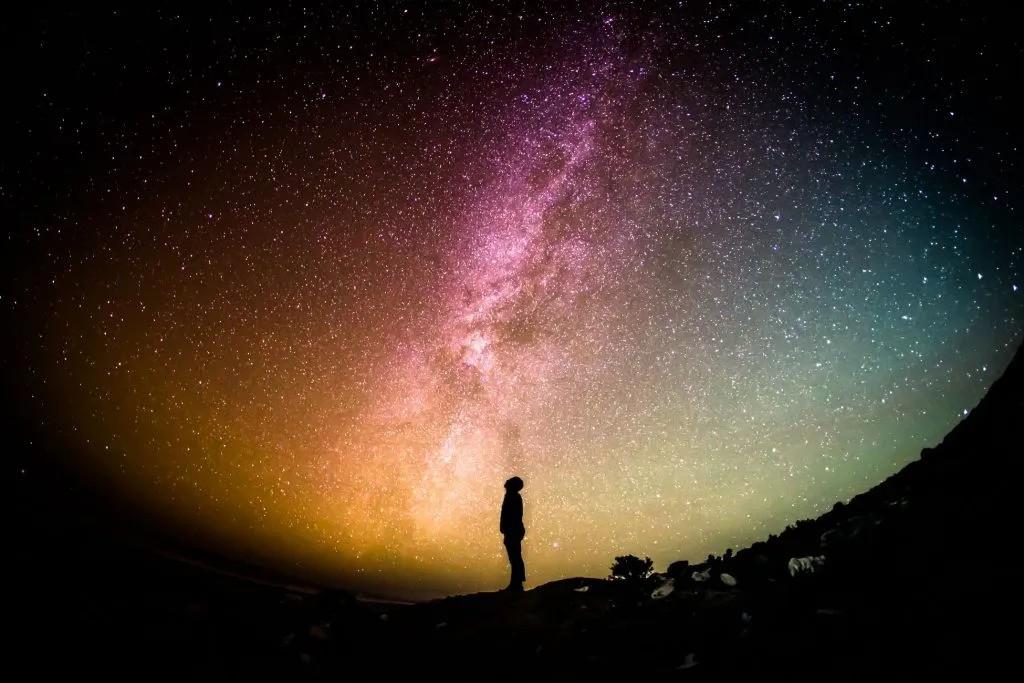What is the mesoteric circle?
The next circle is called the 'mesoteric,' that is to say, the middle. People who belong to this circle possess all the qualities possessed by the members of the esoteric circle (see Lesson 4), with the key difference being that their knowledge is of a more theoretical character. This refers, of course, to knowledge of a cosmic character. They know and understand many things which have not yet found expression in their actions.
The mesoteric path is characterised by the understanding that the exoteric (outer) path does not offer the path to realisation that the essence yearns for. It is at this point that the divine spark that lies within each of us begins to produce introspection. Through this introspection it begins to understand that the path it needs to be on is one that is geared towards reaching and encountering the divine, but it still does not understand what this looks like.
So the essence (us) looks through different traditions in search of a school that will satisfy the yearning and sense of direction that we wish to take in life. In doing so, it finds a multitude of different types of spiritual systems that fit within the mesoteric circle. These schools each have their part to play in educating the essence about its true purpose, but nevertheless it is important to realise that they constitute paths of the mesoteric, not esoteric, kind.
Path of the Fakir
As part of the mesoteric circle we find systems that focus on the realisation of the spirit through physical discomfort or means of torture.
The way of the fakir is the way of struggling with the physical body. This is a long, difficult and uncertain way. The fakir strives to develop physical will, power, over the body. This is attained by means of terrible sufferings, by torturing the body. The whole way of the fakir consists of incredibly difficult physical exercises. The fakir either stands motionless in the same position for hours, days, months, or years; or sits with outstretched arms on a bare stone in the sun, rain and snow; or tortures himself with fire, puts his legs into an ant-heap, and so on. If he does not fall ill and die before what may be called physical will is developed in him, then he attains a type of willpower within the physical realm.
You cannot imagine what hardships fakirs undergo. One fakir observed in the inner court of a temple in India had been standing on the tips of his fingers and toes day and night for twenty years. He was no longer able to straighten himself. His pupils carried him from one place to another, took him to the river and washed him like an inanimate object. But this was not attained all at once. He had to overcome many tortures and sufferings in order to get to that stage.
Path of the Monk
Another path that can be found in this mesoteric circle is the way of the monk. This is the way of faith, the way of religious feeling, religious sacrifice. Only a person with very strong religious emotions and a very strong religious imagination can become a 'monk' in the true sense of the word. The way of the monk is also very long and hard.
A monk spends years struggling with himself, but all of his work is concentrated on the emotional centre. Subjecting all his other emotions to one emotion, that is, to faith, he develops unity in himself, will over the emotions. But his physical body and his thinking capacities may remain undeveloped. In order to be able to make use of what he has attained, he must develop his body and his capacity to think. This can only be achieved by means of fresh sacrifices, fresh hardships, fresh renunciations.
There is a story of a monk who decides to remove himself from society and meditate in a cave for many years. He does this in order to achieve spiritual development of his emotions. For many years he sits in the cave, meditating and contemplating.
After some time, he feels peaceful and serene. Believing himself to be rid of all negative emotions, he makes his way into the marketplace of a nearby town. As he proceeds to make his way through the street with his goods, the hustle and bustle of the people around him causes the monk to be knocked over. In the process, his basket is spilled and his goods fall onto the ground. In response to this, the monk feels a great anger rage up inside of him. He realises he has not tamed his negative emotions and returns to the cave to meditate once again.
This story demonstrates that this path within the mesoteric circle can only help us so far. Without an emphasis on radically changing the non-divine elements that we have within, the change that can be attained is limited. The monk was still the same person he had always been - he possessed the same anger, the same mechanical, reactive responses and the same way of thinking.
Path of the Yogi
This is the path of knowledge, the way of mind. The way of the yogi consists in striving to attain spiritual development by means of knowledge. The yogi develops his mind, but his body and emotions remain undeveloped and, like the fakir and the monk, he is unable to make use of the results of his attainment. He knows everything but can do nothing.
The common thread that we come to find in these different types of schools is that radical internal transformation is not achieved. Rather, the people who follow these paths attempt to experience spirituality whilst still remaining the same individuals they have always been. They have the same vices, the same mechanical reactions and the same ways of thinking that they have always had. As explained in Lesson 1, these are not compatible with the vibration of our interior divinity.
We can temporarily experience the spirit, but inevitably, we have to return from that experience to reality. We cannot maintain that connection permanently because there exists a barrier between us and the spirit. That barrier is our state of unconsciousness.
The mesoteric path is for those who are happy to experience the spirit but remain who they are. We categorise those who travel the mesoteric path as individuals who dress the part, but in essence are not the spirit.
A feature of the mesoteric path is it functions within the parameters of the known, which means comprehending and experiencing everything through the mind. It moves from the known to the known when what we truly need to do is move from the known to the unknown (See Lesson 4: The Esoteric Circle).
We read books, and based on that understanding we form opinions and concepts of how things are. If we take away the mental knowledge that we have accumulated through reading books, what can we objectively say we have learned? Lived, direct experience is required in order to truly comprehend and understand.
The consciousness acts from the known to the unknown and has the ability to do so because it transcends the mind. If we want to understand the realm of spirituality, we must go beyond the barrier of the mind. The mind keeps us confined to the realm of matter, causing us to live spirituality only through the knowledge of the mind, rather than the knowledge of direct inner experience.
The purpose of the true authentic spiritual path is for the individual to encounter their spirit first in order to learn directly from the consciousness, which will lead to inner transformation.

